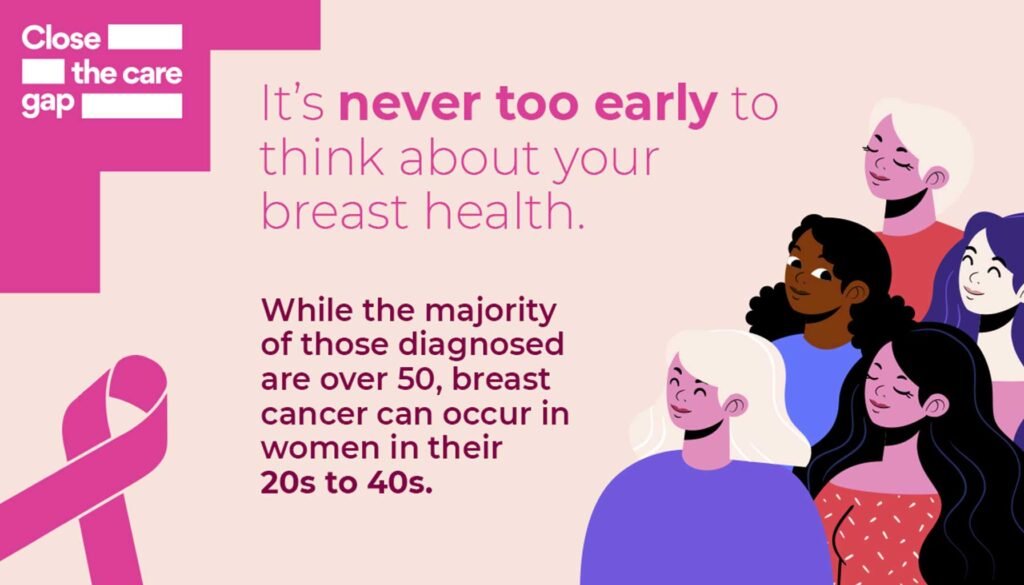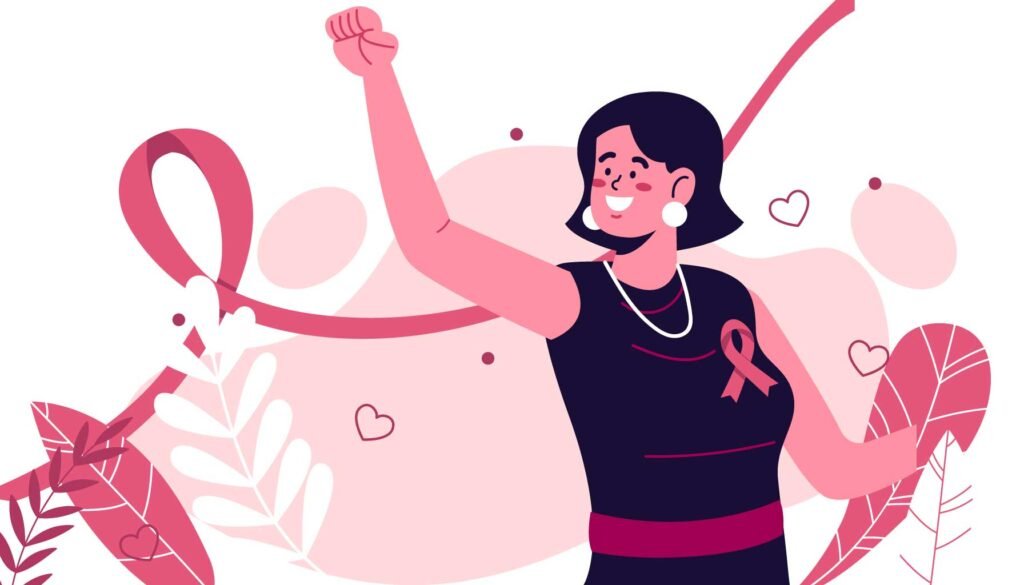
Introduction
Breast cancer, a formidable adversary, emerges from the uncontrolled growth of cells within the breast tissue. It is, after skin cancer, the most frequently diagnosed cancer among women in the United States. Although men can also be affected, the disease predominantly targets women.
The Battle Against Breast Cancer
Through robust support for breast cancer awareness and research, substantial progress has been made in its diagnosis and treatment. Survival rates have climbed, and the number of lives claimed by the disease has steadily declined. Factors such as early detection, personalized treatment approaches, and an enhanced understanding of the condition have all contributed to this positive trajectory.
Symptoms of Breast Cancer
Recognizing the warning signs of breast cancer can be lifesaving. These symptoms include:
1. Breast Abnormalities
- A palpable lump or thickening within the breast, distinguishable from the surrounding tissue.
- Alterations in breast size, shape, or appearance.
2. Skin Changes
- Dimpling of the breast skin.
- A newly inverted nipple.
- Peeling, scaling, crusting, or flaking of the pigmented area surrounding the nipple (areola) or breast skin.
- Skin redness or pitting, resembling the texture of an orange peel.

Causes of Breast Cancer
Breast cancer originates when specific breast cells undergo abnormal growth, dividing more rapidly than their healthy counterparts. These cells accumulate, forming a lump or mass. Subsequently, cancer cells may disseminate (metastasize) within the breast, to the lymph nodes, or other areas of the body.
1. Cellular Origin
- The majority of breast cancers originate in the milk-producing ducts (invasive ductal carcinoma).
- Alternatively, they may start in glandular tissue known as lobules (invasive lobular carcinoma) or other breast cell types.
2. Contributing Factors
- Researchers have identified hormonal, lifestyle, and environmental factors that can heighten breast cancer risk.
- The interplay between genetic predisposition and environmental elements likely plays a pivotal role in its development.
3. Inherited Breast Cancer
- Approximately 5-10% of breast cancers are linked to inherited gene mutations passed down through families.
- Notable mutations include BRCA1 and BRCA2, which significantly elevate the risk of breast and ovarian cancer.
Risk Factors for Breast Cancer
Understanding risk factors can help individuals assess their likelihood of developing breast cancer:
1. Gender and Age
- Being female significantly increases susceptibility.
- Advancing age is a prominent risk factor.
2. Personal and Family History
- A personal history of breast conditions, such as lobular carcinoma in situ (LCIS), heightens the risk.
- If breast cancer has occurred in one breast, the risk of the other breast being affected rises.
- A family history of breast cancer, especially at a young age, increases the likelihood, although most cases have no familial connection.
3. Genetic Mutations
- Specific gene mutations, such as BRCA1 and BRCA2, can be inherited, markedly raising the risk.
4. Environmental and Lifestyle Factors
- Radiation exposure during childhood or adolescence increases risk.
- Obesity, early onset of menstruation, late menopause, and alcohol consumption are all associated with elevated risk.
5. Reproductive Factors
- Having a first child after age 30 or never being pregnant can heighten susceptibility.
Prevention and Risk Reduction
Taking proactive measures to lower risk and enhance early detection is pivotal:
1. Regular Screening
- Regular clinical breast exams and mammograms, as advised by your doctor, can detect breast cancer in its early stages.
2. Breast Self-Exams
- Periodic breast self-exams for breast awareness enable individuals to detect any new changes promptly.
3. Lifestyle Choices
- Limit alcohol consumption or abstain from it altogether.
- Engage in regular exercise.
- Consider the risks and benefits of postmenopausal hormone therapy with your healthcare provider.
4. Healthy Diet
- Adopting a Mediterranean diet rich in plant-based foods, healthy fats, and fish may lower the risk.
5. High-Risk Individuals
- For those at high risk, preventive measures like estrogen-blocking medications or prophylactic surgery may be considered after thorough consultation with a healthcare provider.
Conclusion
Breast cancer remains a formidable health challenge, but with increased awareness and early detection, its impact can be significantly reduced. By understanding its causes, recognizing its symptoms, and addressing risk factors, individuals can take proactive steps towards a healthier future. The ongoing efforts in research and awareness continue to pave the way for a world where breast cancer is not just treatable but preventable.


